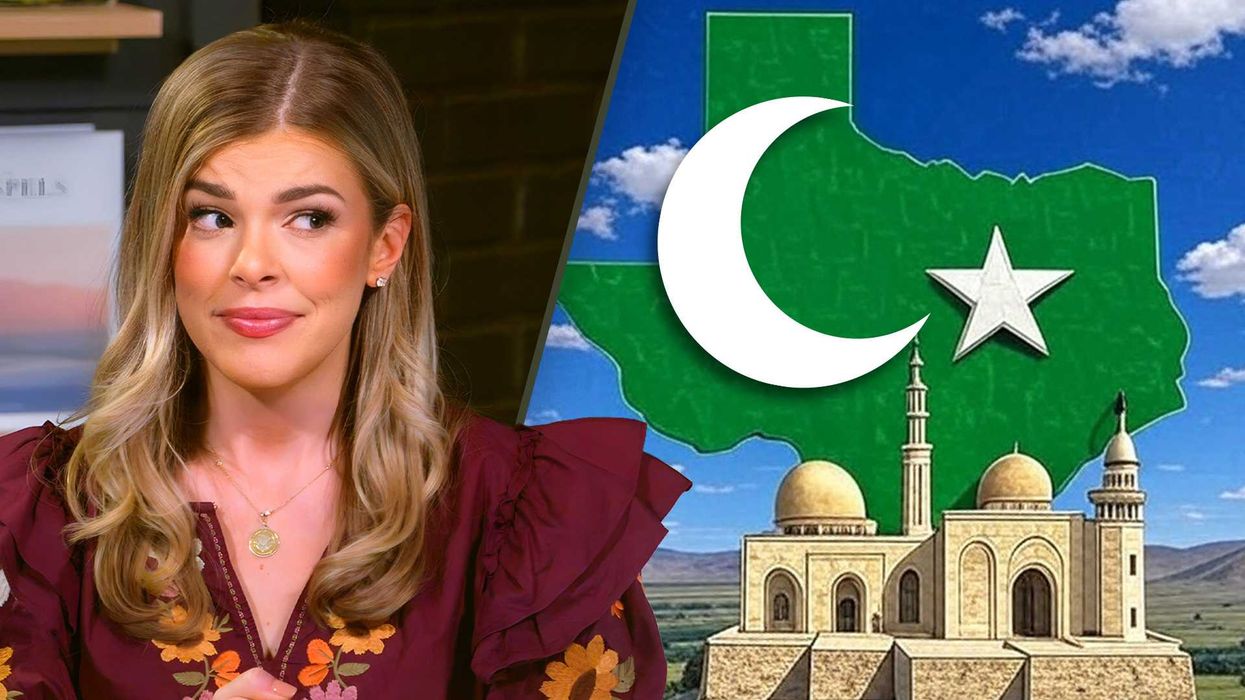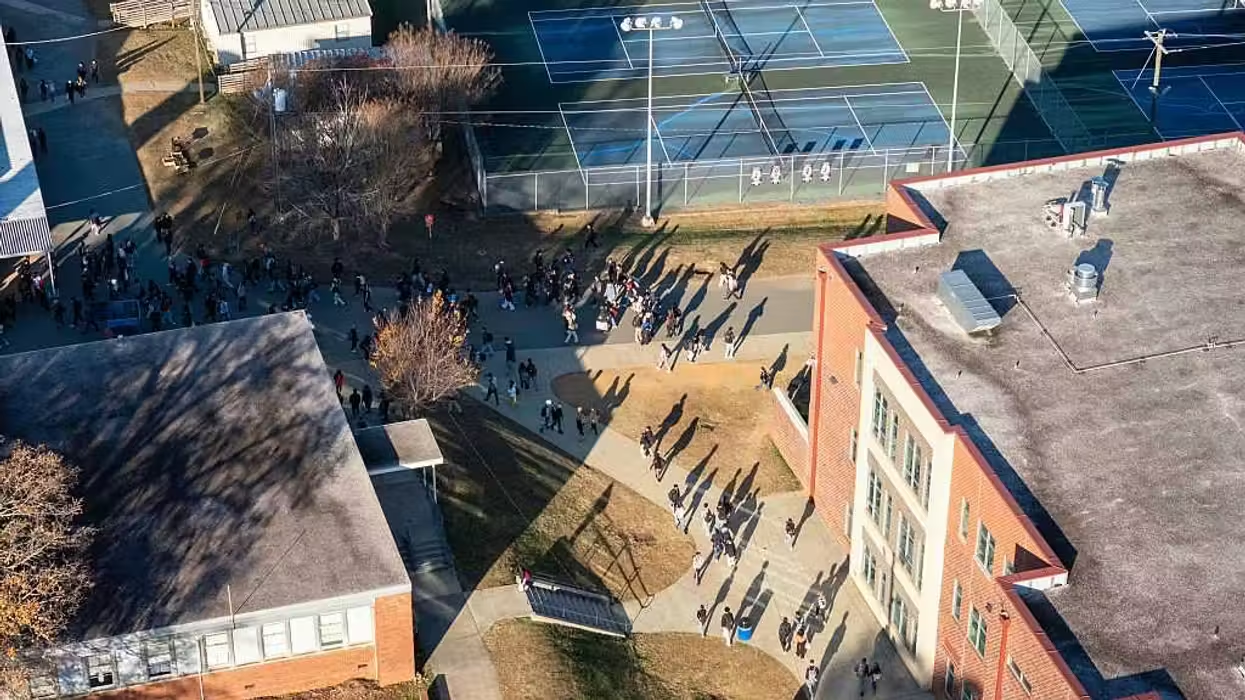
© 2025 Blaze Media LLC. All rights reserved.
"It's a cloud formed by the presence of the fire."
It's hard to forget the dramatic footage of a so-called "firenado" taken by a filmmaker in the Australian Outback as brush fires raged last year. Experts said conditions this year have already produced another such phenomenon and could do so again.
Since Thursday, firefighters have been battling some of the most destructive wildfires to ever strike Australia's most populous state.
 A firefighter monitors a back burn near Mount Victoria in the Blue Mountains on Oct. 21, 2013, as volunteer fire brigades race to tame an enormous blaze, with officials warning it could merge with others to create a "mega-fire" if weather conditions worsen. Crews have been battling fires that flared in high winds and searing heat across the state of New South Wales last week with more than 200 homes so far destroyed and many others damaged. (AFP/Getty Images/William West)
A firefighter monitors a back burn near Mount Victoria in the Blue Mountains on Oct. 21, 2013, as volunteer fire brigades race to tame an enormous blaze, with officials warning it could merge with others to create a "mega-fire" if weather conditions worsen. Crews have been battling fires that flared in high winds and searing heat across the state of New South Wales last week with more than 200 homes so far destroyed and many others damaged. (AFP/Getty Images/William West)
The fires have killed one man, destroyed a total of 208 homes in New South Wales state and damaged another 122 since Thursday, the Rural Fire Service said.
According Rural Fire Service Spokeswoman Natalie Sanders, a "firenado" -- more scientifically known as a pyrocumulus -- could result Wednesday if unstable conditions continue as predicted, The Sydney Morning Herald reported.
"If these fires are still going strong, there's a potential for that to happen again," Sanders told the newspaper.
 What a "firenado" looks like, forming under specific weather conditions during a wildfire. (Image source: Fairfax Media video screenshot)
What a "firenado" looks like, forming under specific weather conditions during a wildfire. (Image source: Fairfax Media video screenshot)
Here's more from the Morning Herald about how such a phenomenon results:
Andrew Sullivan, a leading bushfire behaviour researcher with the CSIRO, said the phenomenon required a fire generating a significant amount of heat.As it burned, the hot air it released would rise as a column into the atmosphere. As air moved upwards, it was quickly replaced by cooler air, a process that produced a convection column.
In very large bushfires, these hot-air columns could be "enormous" and rise high into the atmosphere carrying a large amount of water vapour - one of the main combustion products of fire.
An unstable atmosphere meant that the column could rise higher and higher into the atmosphere, where the temperature was cool enough for the water vapour to condense into a pyrocumulus cloud, said Dr Sullivan, a senior research scientist.
"It's a cloud formed by the presence of the fire," he said.
Listen to Sullivan discuss the formation of a firenado, or pyrocumulus:
If you missed filmmaker Chris Tangey's footage of the firenado that went viral last year, take a look at it in this report:
Milder conditions -- cooler temperatures and light rain -- rolled in Tuesday, giving firefighters relief in their efforts to try and reduce the number of fires that have been raging since last Thursday.
But worse weather is feared for Wednesday.
"The worst of that weather will be probably culminating on Wednesday, but (there won't be) much relief in the intervening period," Rural Fire Service Commissioner Shane Fitzsimmons told the Australian Broadcasting Corporation
 A firefighter lights a back burn near Mount Victoria in the Blue Mountains on Oct. 21, 2013, as volunteer fire brigades race to tame an enormous blaze, with officials warning it could merge with others to create a "mega-fire" if weather conditions worsen. Crews have been battling fires that flared in high winds and searing heat across the state of New South Wales last week with more than 200 homes so far destroyed and many others damaged. (AFP/Getty Images/William West)
A firefighter lights a back burn near Mount Victoria in the Blue Mountains on Oct. 21, 2013, as volunteer fire brigades race to tame an enormous blaze, with officials warning it could merge with others to create a "mega-fire" if weather conditions worsen. Crews have been battling fires that flared in high winds and searing heat across the state of New South Wales last week with more than 200 homes so far destroyed and many others damaged. (AFP/Getty Images/William West)
The wildfires have been extraordinarily intense and early in an annual fire season that peaks during the southern hemisphere summer, which begins in December.
Wildfires are common in Australia, though they don't tend to pop up in large numbers until the summer. This year's unusually dry winter and hotter than average spring have led to perfect fire conditions.
The Associated Press contributed to this report. This story was updated to correct a video.
--
[related]
Want to leave a tip?
We answer to you. Help keep our content free of advertisers and big tech censorship by leaving a tip today.
Want to join the conversation?
Already a subscriber?
more stories
Sign up for the Blaze newsletter
By signing up, you agree to our Privacy Policy and Terms of Use, and agree to receive content that may sometimes include advertisements. You may opt out at any time.
Related Content
© 2025 Blaze Media LLC. All rights reserved.
Get the stories that matter most delivered directly to your inbox.
By signing up, you agree to our Privacy Policy and Terms of Use, and agree to receive content that may sometimes include advertisements. You may opt out at any time.





